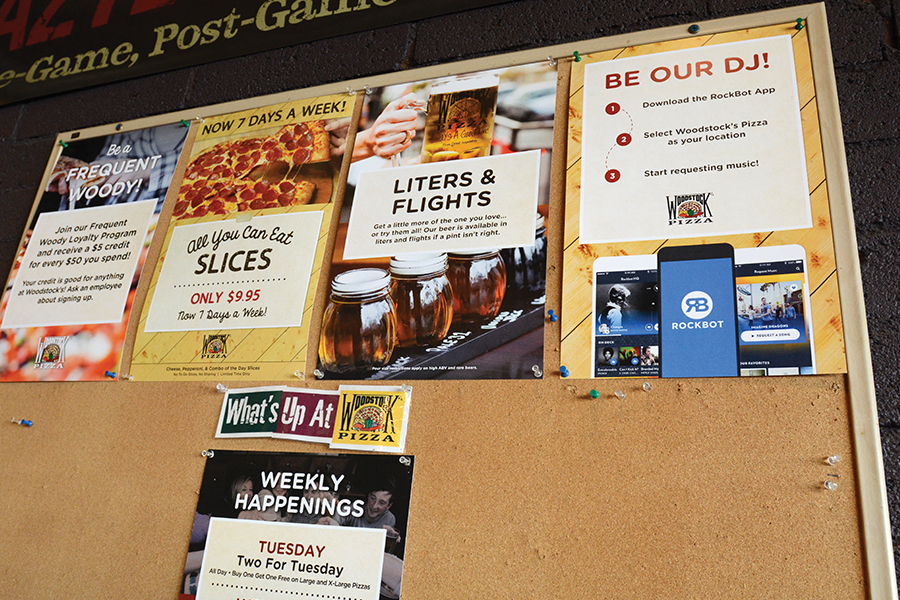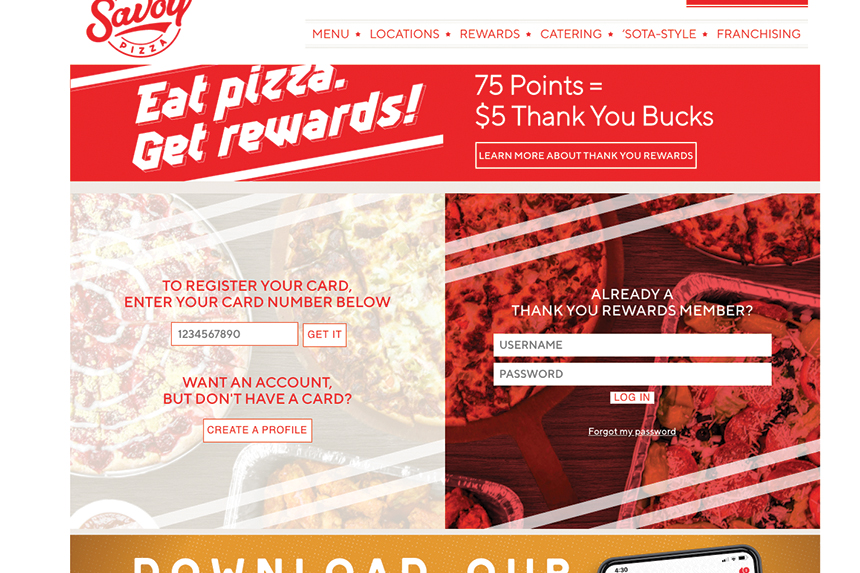Loyalty Pays
Loyalty programs are nothing new, but they’re reaching critical mass. This growth is a direct result of tech advancements in cloud-based POS systems. The boom, coupled with every customer’s easy access to a smartphone, has turned loyalty programs into a hot commodity in the restaurant space. With that said, no loyalty program is the same. Each one is created differently and has different failure points and unique solutions.
When determining which program is right for you, keep in mind, there isn’t currently a clear industry leader. Determining the best fit for you will not be a black and white decision. The goal of any loyalty program is a return on investment to incentivize people to come in more often. That’s the primary intent and goal for all loyalty programs. But again, they vary greatly based on numerous factors.
Pre-POS Loyalty
In 1990, a pre-modern point of sale era, a punch card was your most common loyalty program. Buy 10 sandwiches, get the 11th free. Some modern-day loyalty programs don’t do much more than that still. The difference is they take the punch card idea and do it digitally. Some loyalty programs are way more robust.
A punch card is fundamental; it’s an easy-to-understand return on investment without much cost. That’s why they were popular. The punch card belief is that this person would not have purchased 10 sandwiches if there was not the free 11th sandwich incentive.
Money or Experience Conscious
The problem with loyalty programs like this is they don’t account for the experience-conscious customer. Every customer is either primarily motivated by being money conscious or experience conscious. A money-conscious customer would work to get the 11th sandwich. They take pride in working to get something “free.” Instead of a flimsy piece of card stock. Loyalty programs geared towards this customer use points or total visits noted. They’ll send this info via app, text or e-mail to inform the user of their reward status. As an operator, I don’t love these programs. I go to certain stores where I have opted into the loyalty program and sometimes I’m told, “Do you want to apply your $3 discount to today’s order.” Theoretically, I should be happy. But, instead, the business owner in me thinks: “That’s dumb. I was here anyway. I was going to buy this anyway. I had no idea I even had points, let alone cash value, nor did I care. They’re just blowing money away here on me.”
I fall into the second category, the experience-conscious customer, the ones who have FOMO. For the experience-conscious customer, inform them of things they wouldn’t get otherwise. The goal is to give reasons why, as a result of this program that they have opted into, they get exclusivity and higher-end experiences. Many loyalty programs do not cater to the experience-conscious customer. They are purely points accumulated based on total dollars spent. If you’re not seeking to be the “discount pizzeria,” then any loyalty that doesn’t cater to the experience-conscious customer will immediately be a no-go. In the best-case scenario, the points program acquires their e-mail. Which you could then, in turn, use for marketing new menu items and events, but that’s the best case. You could already do that with any marketing e-mail provider and use a new sign-up bonus and avoid points and loyalty altogether. That leads to data acquisition.
Data Acquisition
After the paper punch card came the plastic loyalty card of the 90s and 2000s. Grocery stores used these to track what you bought, and which stores you visited. To get customers to use the card, They would jack up all their prices and make the membership price the regular price to force the loyalty card usage. All this was done to understand their customers buying behavior better.
Without your loyalty card, you could use your phone number to get points, i.e., be tracked. Over time, your e-mail could do this as well. Big brands built out their own loyalty data acquisition software to better understand their customers and market to them more. With a name, home address, e-mail and birthday, they could determine their gender, age and demographic and send them marketing material that fell in line with that demo.
But for you today, I’m guessing all you want is to sell a little bit more. You’re not trying to get invasive into your customers’ lives. Is there a way to do that without being too Orwellian? Yes and no.
Credit Card Tracking
Yes, you can avoid demo targeting people in an overly invasive way, but the best way to track customers via POS loyalty might be the most invasive of all, their credit card. Most high-end loyalty programs use credit cards as the loyalty number to bypass the need for a physical loyalty card or QR code. Even though you aren’t physically seeing the number, tracking with a credit card is a little off-putting for some.
To those not put off by this, their profile linked to the card can provide a lot of info if they are willing to share it. You can learn a lot with a linked credit card they actively use. You will know which store they shopped at, how much they spent, and even better, what they bought. This is needed to market to the experience customer. The goal of using this data is to build curated content. For example, you can e-mail or text someone who bought a vegan pizza and inform them of a new healthy offering you are rolling out that they can get before it goes on the menu. If they bought a kid’s meal, you could e-mail about a kid’s tour coming up they can RSVP first to before the promo goes live to the general public. You can send out this info when you have it, or it could get sent as an automated workflow. IE, when a customer buys X, three days later, send an e-mail about X, and five days later, a follow-up text about getting a free appetizer when they purchase X again, but only for the next three days.
Detailed loyalty based on your purchasing can feel like Big Brother. When you get into really detailed, robust loyalty programs, your operator mind might start to get excited because that means you’re going to be able to tap your customer in new and exciting ways. For a large portion of the population, typically people in their 40s and older, this will freak them out. This will scream Big Brother and “I want nothing to do with it.” Bear in mind that people over 40, not all, are typically more inclined to be money-conscious customers. Regardless of if they are rich or poor. So, approach anything like this with some level of tact. Even include at the bottom something like, “You’re getting these offers and exclusives because YOU signed up for it. We dig you and have not nor will we sell your info, just an FYI from us to you.”
Tour Guide Loyalty
Another problem with points is they don’t get the customer to buy what you want them to buy. A solid loyalty program does not use ONLY points or dollars but instead allows for items. If you can push an item with low food costs or items that represent you well, items that people might not know about, that’s where you drive actual loyalty—true fandom to your brand. Let’s say you make a fantastic Caprese platter, one that you know if people had, you would own as a customer and potentially transition them to a catering client. If you could say, “Hey, when you buy your fifth pizza in a month, you’ll get an order of the Mom and Pop Caprese Platter,” Then you’re using that freebie as a gateway drug into your catering program. You are the tour guide, leading them on a journey through your menu to maximize their exposure. Getting smart with things like this is how you genuinely maximize loyalty. The customer will see that they’re getting a lot of free food. They don’t overtly realize that they’re getting led into your world more and more. This is how you endear yourself to the customer and make them highly aware of what you do in the hopes of planting the seeds to have a more extensive and loyal relationship with that customer.
Multiple Brands
If you have multiple brands, a loyalty program might be a great way to get the pizza customers to become customers of a different thing you sell. I have multiple brands, and that’s one of the main things I look for in any loyalty program. Can I take one person who’s a fan of our pizza and turn them into a fan of our gelaterias via this loyalty program? Along with all loyalty programs, it’s genuinely about the ROI, and a good loyalty program will show how often someone’s coming back.
ROI
My return-on-investment formula is fundamental and straightforward. Five times. If I spend $300 a month on a loyalty program, I need to know that $1,500 of unique sales generate from this investment in the loyalty program. If it can do that, then it works. That covers the food costs, the labor and the program in and of itself, theoretically. With all loyalty programs, there will be a sales rep with a demo that says it connects to your POS. No matter how cool the sales rep is, no matter how clean the user interface looks, never be married to a contract that you don’t have an out on, assuming you’ve proved the worth of the product.
Get Away Plan
Always negotiate, saying, “If this is what you say it is, I’ll be a very loyal customer. But I need to have a chance to get it set up, try it for 30 days, and call it quits if it’s not working for us.” Because the truth of the matter is stuff that looks amazing sometimes just has a horrible implementation strategy or people that are excellent sales reps and horrible software engineers. You don’t know until you do the dance. And sometimes they’re great, but it just does not work and integrate properly with your point of sales system, it causes all sorts of unintended problems that you can’t live with, and you don’t want to be stuck on the hook for a contract for over a year of something like that. So be wise in researching and calculating if any loyalty program is right for you. Ideally, a loyalty program that your POS company endorses will be your best bet, but even then, you still need to do your due diligence.
The Goal
Great loyalty programs bring back lazy customers and incentivize current customers to visit more often. Great loyalty turns good customers into full-blown ambassadors of your brand. That’s my goal with any program I evaluate. Also, I’m still actively always on the lookout for the best program to do that.
MIKE BAUSCH is the owner of Andolini’s Pizzeria in Tulsa, Oklahoma.








